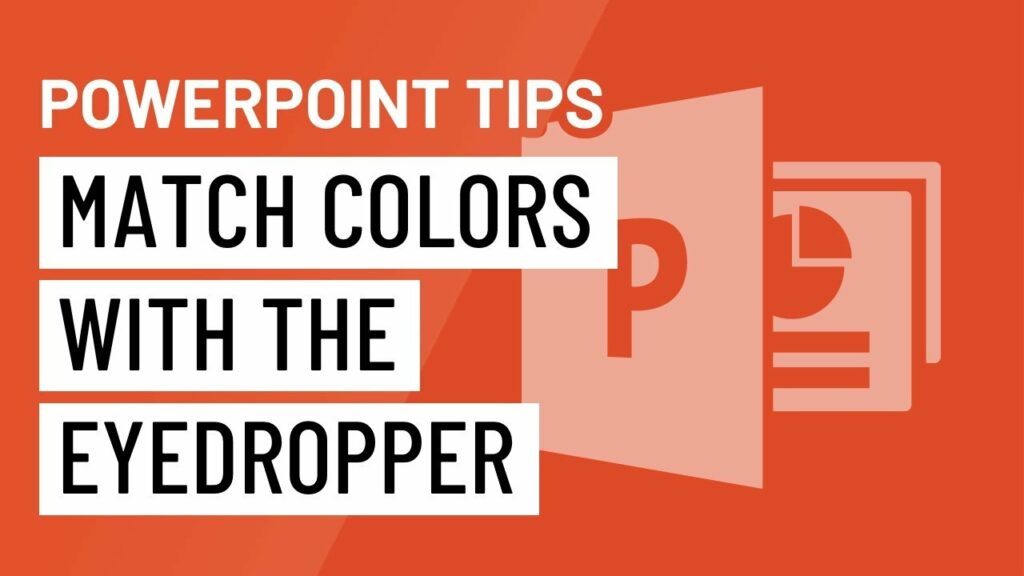The Art of Harmony: Matching Colors with the Eyedropper in PowerPoint

In the realm of presentations, color plays a pivotal role in shaping the visual impact and aesthetic appeal of slideshows. Microsoft PowerPoint, a ubiquitous tool for creating presentations, offers a wide array of colors and customization options to help users craft visually stunning slides. However, achieving color harmony and consistency across slides can be a daunting task, particularly when trying to match colors to existing elements or brand guidelines. To address this challenge, PowerPoint provides a powerful tool known as the Eyedropper, which enables users to easily match colors from any part of their presentation. In this comprehensive guide, we’ll explore the intricacies of matching colors with the Eyedropper in PowerPoint, empowering users to create cohesive and visually captivating presentations.
The Significance of Color Matching:
In the world of presentations, color serves as a powerful tool for communication, conveying emotions, highlighting key points, and reinforcing brand identity. Effective color matching offers several key benefits:
- Consistency: Matching colors ensures consistency in the visual appearance of slides, creating a cohesive and professional presentation.
- Brand Alignment: Aligning colors with brand guidelines helps reinforce brand identity and enhances brand recognition among the audience.
- Visual Hierarchy: Proper color matching can help establish a clear visual hierarchy, guiding the audience’s attention to important elements and information.
- Aesthetic Appeal: Harmonious color schemes enhance the overall aesthetic appeal of the presentation, making it more engaging and memorable for the audience.
Understanding the Eyedropper Tool:
The Eyedropper tool in PowerPoint allows users to select colors from any part of their presentation and apply them to other objects or elements. Here’s how to access and use the Eyedropper tool:
1. Select an Object:
- Start by selecting the object whose color you want to match or change. This could be a shape, text box, image, or any other element in your presentation.
2. Access the Eyedropper:
- With the object selected, navigate to the Drawing Tools or Format tab in the ribbon, depending on the version of PowerPoint you’re using.
- Look for the Shape Fill or Text Fill dropdown menu, which typically contains a color palette.
- Click on the dropdown arrow next to the color palette to expand the menu, then look for the Eyedropper icon (usually represented by a dropper tool).
3. Use the Eyedropper:
- Click on the Eyedropper icon to activate the tool. Your cursor will change to a crosshair.
- Position the crosshair over the color you want to match within your presentation. This could be anywhere on the slide, including shapes, images, or even outside of PowerPoint on your desktop or other applications.
- Click once to select the color. PowerPoint will automatically apply the selected color to the object you initially selected.
4. Fine-Tuning (Optional):
- After applying the color with the Eyedropper, you may want to fine-tune it further.
- Use the color options in the dropdown menu to adjust the hue, saturation, brightness, or transparency of the selected color to achieve the desired effect.
Best Practices for Color Matching:
To achieve optimal results when using the Eyedropper tool in PowerPoint, consider the following best practices:
- Sample Multiple Colors: Experiment with sampling colors from various parts of your presentation to find the perfect match.
- Consider Contrast: Ensure that the colors you choose provide sufficient contrast for readability and visibility, particularly for text and graphical elements.
- Stay Consistent: Maintain consistency in color usage throughout your presentation to create a cohesive visual experience for the audience.
- Check Across Devices: Test your color choices on different devices and screens to ensure they appear as intended across various viewing conditions.
- Accessibility: Consider the accessibility implications of your color choices, ensuring that color combinations are legible for all audience members, including those with visual impairments.
Conclusion:
Matching colors with the Eyedropper tool in PowerPoint is a valuable skill that empowers users to create visually cohesive and engaging presentations. By leveraging this powerful tool, users can achieve color harmony, reinforce brand identity, and enhance the overall aesthetic appeal of their slideshows. Whether aligning colors with brand guidelines, establishing visual hierarchy, or simply adding a touch of creativity, the Eyedropper tool offers endless possibilities for customization and personalization. So, the next time you embark on creating a PowerPoint presentation, remember to utilize the Eyedropper tool to achieve precise color matching and elevate the visual impact of your slides. With a keen eye for color and attention to detail, you can create presentations that captivate and inspire your audience, leaving a lasting impression long after the slideshow concludes.







